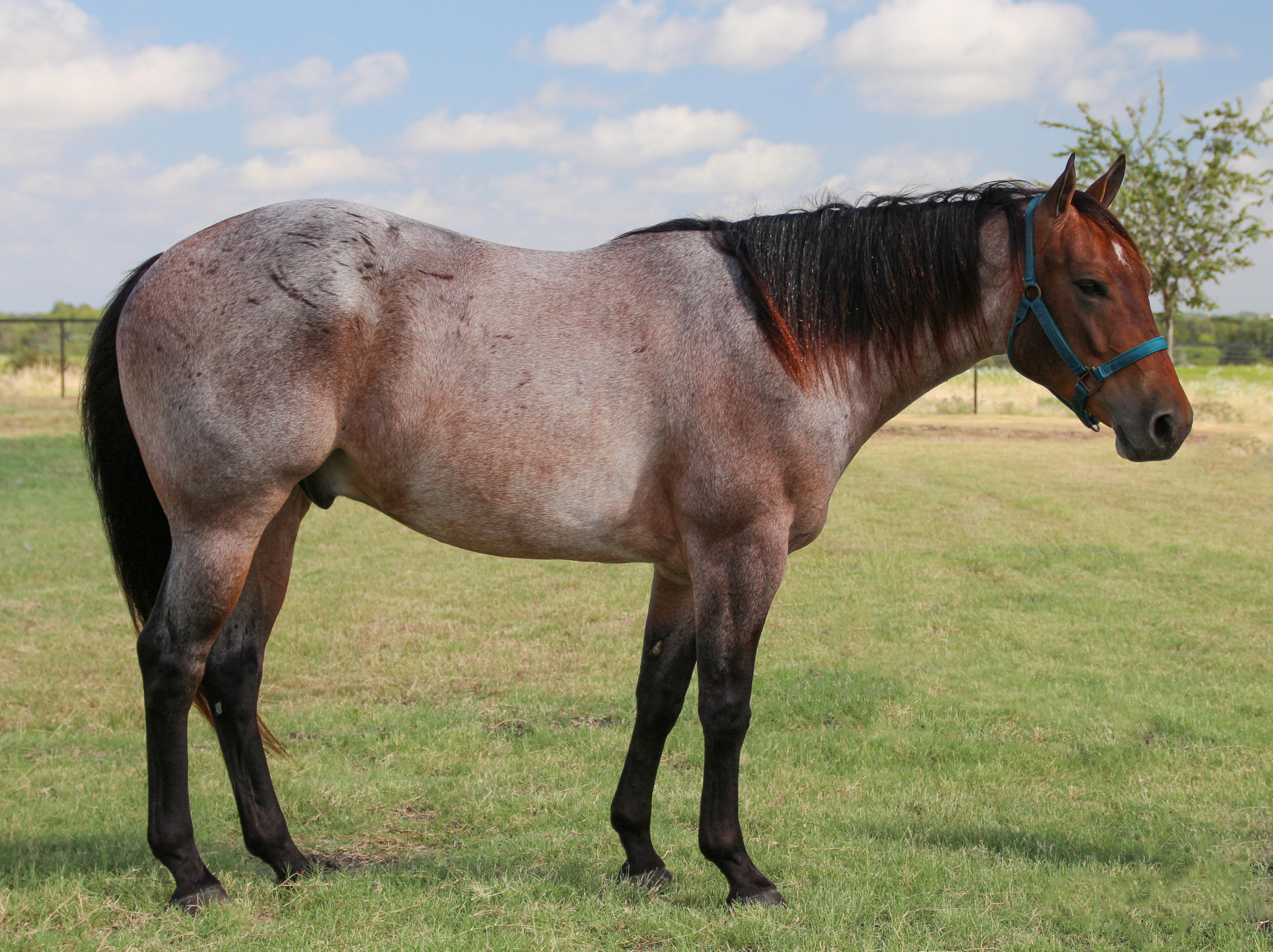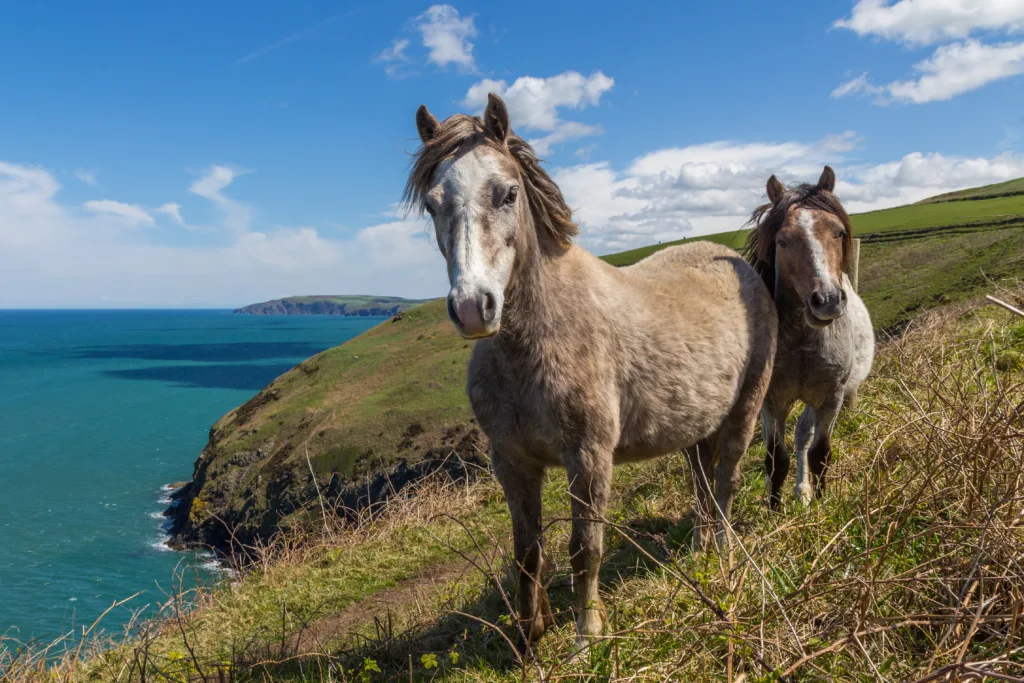The concept of a purple roan horse is often a topic of discussion amog equine enthusiasts. However, it is important to note that there is technically no such thing as a purple roan horse.
Roan is a term used to describe a horse’s color when the horse has one color of body hair but has white hairs interspersed within the body coloration. The most common type of roan is a red roan or “strawberry” roan. This type of roan occurs when a horse has a chestnut base color and a roan gene that causes white hairs to mix with the chestnut hairs, resulting in a pinkish-red overall appearance.
In the case of a dark chestnut color, the coat may have a purplish hue, and some people may refer to this as a “lilac roan.” However, this is not a recognized color by any breed registry, and it is simply a descriptive term used by some individuals.
The genetics behind roan coloring are complex and involve multiple genes. The three primary base colors include red (chestnut “e” gene), black (“E” gene), and bay (black “E” gene + agouti “A” gene). When paired with the roan gene, these base colors result in the red or strawberry, blue, and bay roans, respectively.
Roan is a white patterning coat color trait of intermixed white and colored hairs in the body while the head, lower legs, mane, and tail remain colored. Roan horses are born with the pattern, though it may not be obvious until the foal coat is shed.
While a purple roan horse may not exist in reality, the concept of such a horse can still inspire creativity and imagination in equine enthusiasts. However, it is important to understand the science behind coat colors and genetics to accurately classify and understand the colors of horses.
What Is A Purple Roan Horse?
Technically, there is no such thing as a purple roan horse. Roan is a term used to describe a horse’s color when the horse has one color of body hair but has white hairs interspersed within the body coloration. The most common type of roan is a red roan or “strawberry” roan. Roan horses can also be blue or bay roans. However, horses cannot have a purple coat color, as it is not a natural color for horses. Horse coat colors can range from black, brown, chestnut, gray, palomino, to many oher colors, but not purple.

What Is A Lilac Roan?
A lilac roan is a coat color of a horse that is based on a dark chestnut color. The coat has a purplish hue, which is why it is called lilac. It is a type of roan, which means that the coat has a mixture of white hairs and colored hairs, giving it a speckled or mottled appearance. The lilac roan is a rare color and is oten considered a desirable trait in some horse breeds. It is important to note that the term “lilac roan” is not recognized by all horse breed registries, and the color may be classified differently depending on the organization.
What Are The Three Roan Colors?
Roan is a coat color pattern in horses that is characterized by an even mixture of white hairs and colored hairs. The thee primary base colors that can be roaned include red, black, and bay. Red roan is caused by the chestnut gene (e), and black roan is caused by the dominant black gene (E). Bay roan is caused by the black gene (E) in combination with the agouti gene (A). When the roan gene is present with the red base color, it results in a strawberry or red roan. Similarly, when the roan gene is present with the black base color, it produces a blue roan, and when it is present with the bay base color, it results in a bay roan. Therefore, the three roan colors are red or strawberry roan, black or blue roan, and bay roan.
What Are The Roan Colors In Horses?
Roan is not a color, but rather a coat pattern that is characterized by intermixed white and colored hairs on the horse’s body. Roan horses can have a variety of base coat colors, including bay, chestnut, black, and even gray. The amount of white intermingled with the colored hairs can vary between horses, with some having a more evenly distributed roan pattern and others having more concentrated areas of color or white. The head, lower legs, mane, and tail of a roan horse typically remain colored, wile the body exhibits the roan pattern. Some common roan variations include blue roan, red roan, and strawberry roan. Blue roan horses have a dark base coat with intermixed black and white hairs, while red roan horses have a chestnut base coat with intermixed white hairs. Strawberry roan horses have a lighter chestnut base coat with intermixed white hairs that give the coat a reddish-pink hue.

Conclusion
The term “purple roan horse” is technically incorrect as roan is a term used to describe a horse’s color when white hairs are interspersed witin the body coloration. The most common type of roan is a red or “strawberry” roan. However, in the case of a dark chestnut color, the coat may have a purplish color and be referred to as a “lilac roan.” It is important to understand the genetics behind roan coloration, with the three primary base colors being red, black, and bay, each paired with the roan gene resulting in different types of roan. Roan horses are born with the pattern, and it may not be obvious until the foal coat is shed. Therefore, while there is no such thing as a purple roan horse, understanding the intricacies of horse coloration can lead to a greater appreciation for the beauty and diversity of these magnificent animals.
